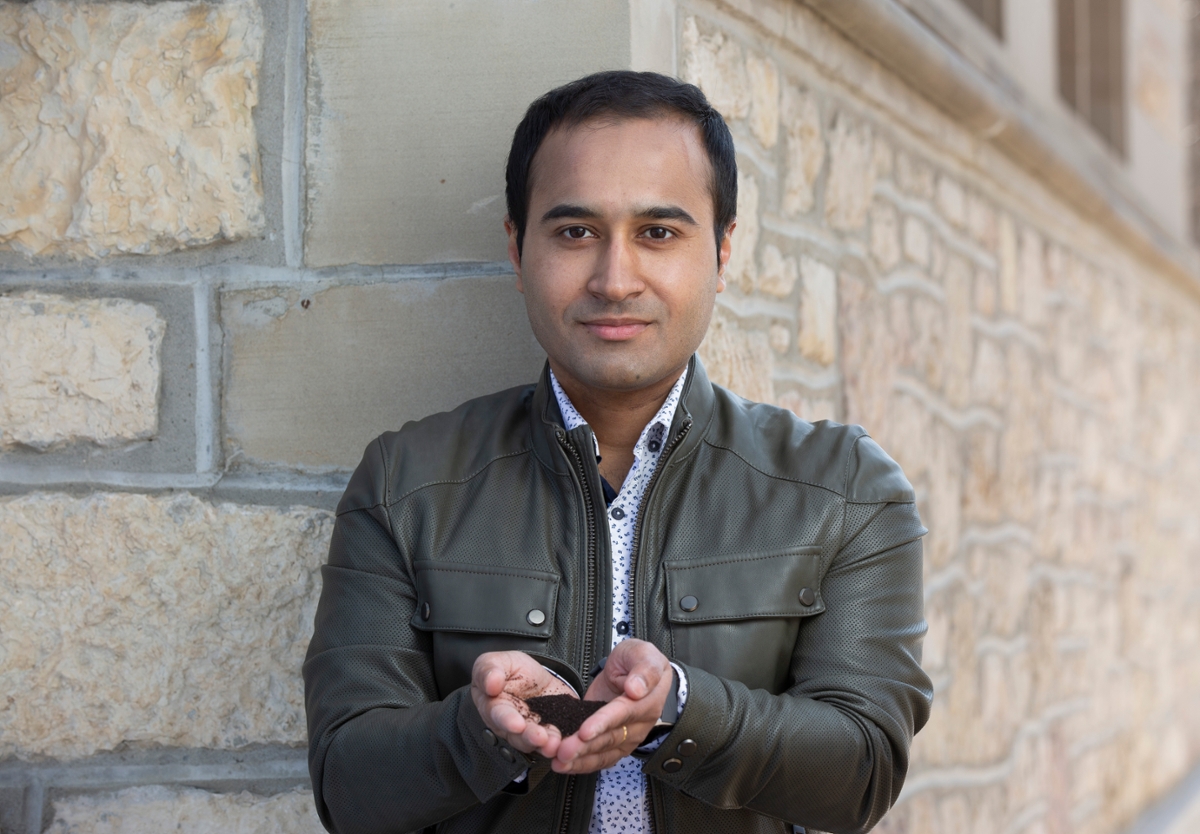
USask Engineering advances new technology that turns waste into 'green' fuel
The synthesis gas or 'syngas' produced could be a cheaper alternative for generating heat, steam or power.
By Federica GiannelliA University of Saskatchewan engineering research team is advancing the design and use of technology that will turn organic waste into environmentally friendly fuels and fertilizer—novel work that is also at the centre of a collaboration with NASA.
"We are improving existing eco-friendly technologies to more efficiently produce the next generation of biofuels that can help lower greenhouse emissions," said Sonil Nanda, USask chemical and biological engineering research associate.
Nanda and his supervisor Ajay Dalai have successfully produced high-quality synthesis gas or "syngas," a fuel gas mixture, using crop and forestry residues, food waste such as cooking oil, municipal solid waste, cattle manure, petroleum and petrochemical waste, and even scrap tires. They are among the very few in Canada who have succeeded.
Syngas—which consists of hydrogen, carbon monoxide, carbon dioxide, and methane—could be a cheaper alternative to fossil fuels for generating heat, steam or power. It can also be used to create other by-products such as green diesel and hydrogen fuel cells for cars.
"Canada could be a leader in this kind of technology because it produces lots of the residual feedstock from the agriculture and forestry sectors that can be turned into syngas and its by-products," said Dalai, USask Canada Research Chair of Bio-energy and Environmentally Friendly Chemical Processing.
In a recent collaboration with University of Waterloo engineering professor Janusz Kozinski, Nanda and Dalai worked with NASA to apply their technology to convert organic waste and wastewater into energy for possible use on the International Space Station and in long-term space missions.
The USask researchers have been improving syngas production by making it faster and possibly cheaper, as well as "greener" by using water in place of fossil fuels to break down the feedstock and produce syngas. Existing methods are not widely used because they still rely on fossil fuels and are expensive—the process is lengthy and requires lots of energy.
Nanda and Dalai's approach saves energy by creating syngas at high pressure and relatively lower temperatures than traditional methods, a process called supercritical water gasification. The USask team's successful results are published in Energy Conversion and Management, Waste Management and Chemical Engineering Science.
"As the feedstocks we use to produce syngas are either non-plant residues or non-edible waste, our approach doesn’t take anything away from the production of human food and animal fodder," said Nanda.
Nanda said this new technology is a win-win because in addition to syngas, the other by-product of the process is a dark material called biochar, similar to burned coal.
"Biochar can be used as an organic fertilizer with great benefits for maintaining soil health and useful soil microorganisms, and helping increase plant yields," said Dalai. "Especially desert-like or sandy soils would benefit from biochar to restore the soil productivity."
In addition, unlike traditional methods that cause the emission of harmful carbon dioxide into the atmosphere, the carbon dioxide produced in the team’s process helps plants produce oxygen, potentially making it a carbon neutral technology, says Dalai. The biochar results are published in Waste and Biomass Valorization.
While the USask researchers expect to see their improved water-based technology commercialized in three to five years, this method is not widespread yet due to high maintenance costs—the salt in food waste corrodes the production tanks.
"We are leading some in-depth analysis to see whether these maintenance costs are comparable to traditional methods," said Nanda. "If so, companies in the energy industry could be incentivized to switch to technology such as ours."
The research is funded by the federal agency NSERC, Western Economic Diversification Canada, Canada Foundation for Innovation, Canada Research Chairs Program, Agriculture and Agri-Food Canada, the Saskatchewan government’s Agriculture Development Fund, Mitacs, and a few companies in the agriculture and energy sector.
Federica Giannelli is a graduate student intern in the USask Research Profile and Impact office. This article first ran as part of the 2020 Young Innovators series, an initiative of the USask research profile and impact unit, in partnership with the Saskatoon StarPhoenix.

